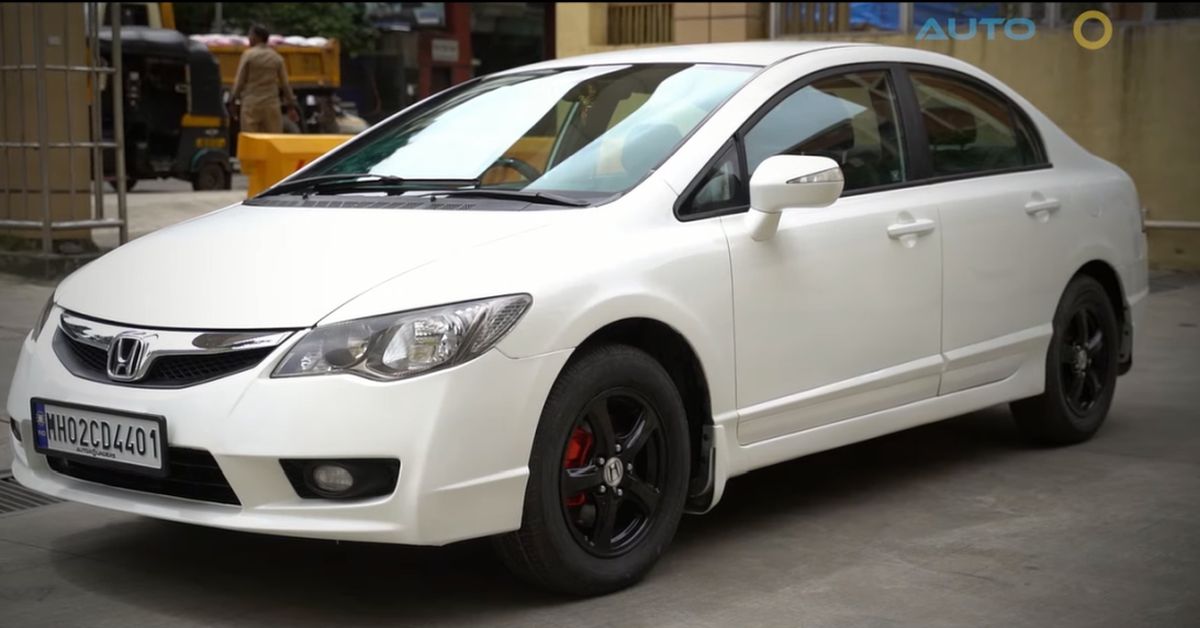The Honda Civic has long been revered in India for its blend of reliability, driving dynamics, and premium feel. While discontinued in new markets, the used Civic remains a compelling option for specific buyers in 2025. Here’s a detailed analysis of who should consider it and who might want to look elsewhere.
- Driving Enthusiasts Seeking Performance The Civic’s 1.8L i-VTEC or R18 engines (depending on the generation) deliver responsive power and smooth acceleration, outperforming many modern turbocharged three-cylinder engines. Its low-slung chassis and precise steering make it ideal for drivers prioritizing handling over high ground clearance. As noted by owners, even older Civics feel “buttery smooth” on highways and offer a connected driving experience rarely found in today’s SUV-dominated market.
- Budget-Conscious Buyers Wanting Premium Features A well-maintained 2010–2012 Civic can be purchased for ₹5–7 lakh, offering features like dual airbags, ABS, premium interiors, and superior NVH levels that rival entry-level luxury sedans. For context, newer sedans in this price range often lack comparable build quality or driving refinement.
- Long-Term Owners Prioritizing Reliability Honda’s reputation for bulletproof engines holds true, with many Civics clocking over 1.5 lakh kilometers without major issues. Regular maintenance (oil changes every 5,000–7,500 km, timely fluid replacements) ensures longevity. Pre-2015 models avoid the complexity of hybrid systems, simplifying repairs.
- Parts Availability and Maintenance Costs Honda’s policy of restricting over-the-counter OEM parts sales forces owners to rely on authorized service centers, where repairs can be costly. While mechanical components like engines and transmissions are robust, wear-and-tear parts (suspension arms, AC compressors) may require hunting in gray markets or salvage yards.
- Regulatory Hurdles Civics older than 15 years face fitness certificate renewals every 5 years, which can be cumbersome in states with strict emission norms. For example, a 2010 model would need re-registration in 2025, potentially limiting long-term usability. We can’t even be sure if the car will be permanently banned after a few years when emission norms get stricter.
- Road Conditions and Practicality With ground clearance under 170 mm, the Civic struggles on poorly maintained roads. One owner noted damaging a driveshaft on rough terrain, highlighting its limitations compared to SUVs. Urban buyers with smooth commutes will fare better.
- Tech-First Buyers: The Civic lacks modern amenities like ADAS, touchscreen infotainment, or connected car features found in newer vehicles like the Hyundai Verna or Skoda Slavia.
- SUV-Oriented Users: Those needing high seating, cargo space, or all-weather capability should consider compact SUVs like the Hyundai Creta instead.
- Budget Buyers Seeking Low Maintenance: Maruti Suzuki and Hyundai models offer cheaper spare parts and wider service networks.
- Living in a small town: This will make it much more difficult to access spare parts.
A used Honda Civic makes sense for:
- Driving purists unwilling to compromise on engagement.
- Buyers seeking near-luxury comfort at a fraction of the cost.
- Those who can handle occasional DIY repairs or have access to trusted mechanics.
Avoid if you prioritize cutting-edge tech, ruggedness, or hassle-free ownership. Always verify service history, check for suspension wear, and confirm parts availability locally before purchasing
When considering the purchase of a used Honda Civic, it’s essential to understand the common repairs that may be needed and their associated costs. Here’s a detailed overview based on various sources and user experiences.
- Oil ChangesFrequency: Every 5,000 to 7,500 km.Cost: Typically ranges from ₹1,500 to ₹5,000 depending on whether you go to a dealership or an independent mechanic. Dealerships may charge around ₹3,000 for a standard oil change1.
- Brake Pads ReplacementFrequency: Generally every 30,000 to 50,000 km.Cost: Replacing all four brake pads can cost between ₹15,000 and ₹30,000. The price varies based on whether you opt for OEM or aftermarket parts3.
- Tires ReplacementFrequency: Tires usually last about 40,000 to 60,000 km.Cost: Depending on the brand and type, replacing tires can range from ₹4,000 to ₹10,000 per tire. A full set could cost between ₹16,000 and ₹40,0003.
- CVT Fluid ChangeFrequency: Recommended every 30,000 km.Cost: A CVT fluid change typically costs around ₹8,000 to ₹12,000 at a dealership.
- Suspension Repairs (e.g., struts and shocks)Frequency: May need replacement every 80,000 to 100,000 km.Cost: Replacing struts can cost between ₹20,000 and ₹40,000 for all four.
- Air Filter ReplacementFrequency: Every 15,000 to 30,000 km.Cost: Usually costs around ₹1,500 to ₹3,500 depending on whether it’s a cabin air filter or engine air filter
- Battery ReplacementFrequency: Typically every 3-5 years.Cost: A new battery can range from ₹4,000 to ₹10,000 depending on the brand and specifications
- Starter Motor ReplacementFrequency: As needed; often occurs around the 100,000 km mark.Cost: This can be quite expensive, ranging from ₹6,000 to ₹12,000 depending on labor costs and part availability
For a used Honda Civic that is well-maintained but has typical wear-and-tear issues:
- Average annual maintenance costs are estimated between ₹15,000 and ₹30,000 depending on driving habits and local service prices.
While the Honda Civic is known for its reliability and longevity, potential buyers should be prepared for routine maintenance costs that can add up over time. Understanding these common repairs and their costs will help in budgeting for ownership of a used Civic effectively. Regular maintenance is crucial to avoid more significant expenses down the line and ensure the vehicle remains in good condition.



